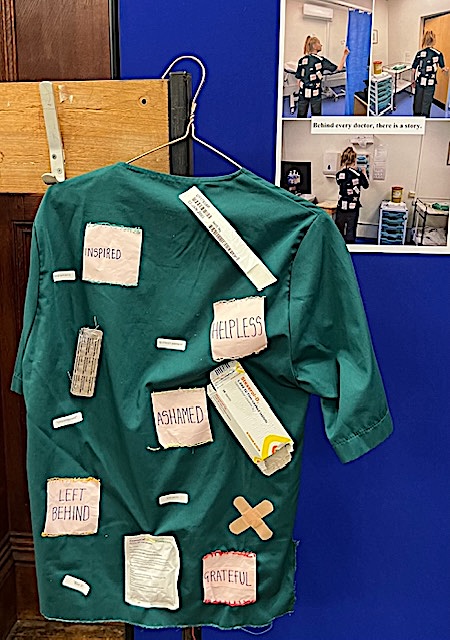There is a story behind every doctor
They say doctors make the worst patients, but we think patients can make the best doctors. Medical schools take the brightest minds in society and fill them with knowledge, experience, and skill, churning out doctors ready to save lives. Yet what many are missing is the degree of empathy that can only be gathered when you have been the one sat in the consultation chair, or held under the knife, or when sectioned under the mental health act. The experiences only gained when you have had to trust another with your life or that of a loved one, when you have relinquished all control and are lying bare, at the mercy of another.
You should never be ashamed of your past, or the struggles you have endured. These make us stronger and shape us as medical professionals. Dehumanised, embarrassed, and ashamed are all emotions felt by patients who feel like their illness or injury has taken away their life, independence, and dignity – the sense that you have been stripped bare and known as nothing more than a bed-number… looked down on and talked about while you feel left out in the dark.
We understand your struggle, we feel your pain and frustration, we once wore that gown.
We don’t want others to experience what we did, so we strive each day to be; the doctor who made a difference, the doctor who really cared, the doctor who listened, who understood and validated our experiences, who believed in us, stood by us, and showed us the light when we couldn’t see it ourselves.
This is who a doctor should be.
Helen Low, Rosie Dauffurnm Sara Tadress and Ali Idris
Effective Consulting, Year 1, 2023, Foundation of Medicine Conference Creative Piece
ALT-TEXT FOR IMAGE ACCESSIBILITY
A doctor is pictured facing away from the camera wearing emerald green scrubs in 3 different positions (closing the curtains around a bed, opening the door and getting some gloves surrounded by medical supplies) in GP surgery consultation room. Attached to the scrubs are medical memorabilia such as pills, hospital wrist bands. to represent time spent as a patient.
On the back of the scrubs there are post-it notes sew to the shirt that read:
Ashamed
Inspired
Helpless
Left behind
Grateful
These represent feelings that a patient may experience, sewn into the top with thick embroidery thread to symbolise how you carry these memories and feelings with you for years beyond discharge. Both positive and negative emotions are displayed showing how our past experiences can shape our perception of healthcare
Also, there are small labels printed on the back of the shirt reading:
‘Bed 5’
‘Chronic’
‘Uncompliant’
‘Overdramatic’
‘Difficult patient’
These are all labels that may be attached to a patient, by a medical professional. We hope to demonstrate though our art the power of words and how what you say, can stay with someone for years. Highlighting the importance of patience, kindness, compassion and understanding.
We hope our art shows that many doctors have experience as a patients, or as close family members, and it is reflecting on these experiences, and the emotions came with them is what will make an incredible doctor.
You should never be ashamed of your past, it has made you stronger, kinder, and more empathetic.

This piece of work is very enticing, as in medicine – and any other subject studied at degree level – people feel a personal connection to it which has drawn them towards the career. as medical students, we can all agree that an amalgamation of different experiences has led us down the path towards this career. Therefore as students of this vocation, it’s very important to not feel ashamed of these personal experiences and rather we should embrace them. We would not have such loving and meticulous care had we not had doctors that had experienced such experiences.
I really like this piece. I view the experiences being on the back as symbolic. Both in the sense that they don’t let them get in the way of their work. But also that they’re used as motivators, pushing them into it.
I also find symbolism in the shirt being hung up. They’re not carrying these experiences around, being dragged down by them. Rather, they’ve reflected and made positive light of them. Using them in their work, remaining mindful of their own experiences to guide the way they practice medicine.